Step into the world of grunge music and discover the bewitching power of Kurt Cobain’s guitar. This quintessential instrument, intertwined with the soul of one of the most influential musicians in history, played a pivotal role in shaping the distinctive sound that defined an entire generation. From the raw energy of every strum to the haunting melodies that echoed through the air, Cobain’s guitar became the unmistakable driving force behind the music that revolutionized the music industry. So, what kind of guitar did the legendary Kurt Cobain play? Dive deeper into the heart and soul of this iconic instrument, unraveling the secrets that made it a symbol of rebellion and artistic expression.
What was so iconic about Nirvana?
Nirvana was a groundbreaking band that helped to define the grunge movement of the late 1980s and early 1990s. Their sound, which blended elements of punk, metal and alternative rock, appealed to a wide range of listeners. Nirvana’s lead singer/guitarist Kurt Cobain wrote songs about his inner struggles with depression, alienation and drug addiction. The band’s single “Smells Like Teen Spirit” became a generational anthem, and their popularity propelled them to the top of the charts.
Nirvana’s influence reaches far beyond the music industry. Their anti-establishment attitude, distinctive sound and outspoken lyrics have left an indelible mark on popular culture. Cobain in particular has become a cult figure whose life, struggles and demise are endlessly analyzed by fans and biographers alike. The band’s music continues to inspire new generations of alternative rock bands, ensuring that their legacy will live on for many years to come.
Nirvana’s influence can even be seen in the fashion world, with their iconic ‘grunge-style’ being emulated by designers and celebrities all over the world. Their music was a reflection of their inner turmoil, and it has touched countless people who have gone through similar struggles in life. Despite Cobain’s tragic death, Nirvana’s music will live on forever as one of the most influential bands of all time.
Nirvana is an inspiration for many artists who have come after them, not only in the alternative and punk rock world but also in other genres such as metal and hip hop. Bands such as Linkin Park, Slipknot and Korn have all been heavily influenced by Nirvana’s sound and attitude, carrying on the legacy of the legendary band. Despite their short-lived career, Nirvana will continue to be remembered as a symbol of rebellion and freedom for generations to come.
![]()
The musical influence of Nirvana can still be felt today in new bands such as Royal Blood and The 1975, who take inspiration from the sound and attitude of the legendary trio. Even though it’s been almost 25 years since their first album, Nirvana continues to be an inspiration for many new bands that are striving to make their mark on the music scene.
The impact of Nirvana can also be felt in visual media such as films and TV shows. Their songs have been featured in various movies and television series, further cementing their status as an iconic band. Their influence can also be seen in the fashion world, with their grunge style becoming a staple of modern fashion.
Nirvana’s legacy will live on forever and they will always be remembered as one of the most influential bands of all time. They have opened up the possibility for countless new artists to express themselves through music and break down barriers in both the music industry and popular culture. Their influence is still felt in all corners of the world and their songs will always be remembered as an inspiration to those who came after them [1].
Most popular songs by Nirvana
Nirvana became a major success after the release of their 1991 album Nevermind which popularized the Seattle grunge movement and brought alternative rock to the mainstream. Here are some of their most popular songs:
Smells Like Teen Spirit – This song was released as the lead single from Nevermind in 1991 and is one of the group’s most recognizable and iconic songs. It topped charts all over the world and received two Grammy nominations for Best Rock Song and Best Hard Rock Performance.
Come As You Are – This song was the second single from Nevermind and achieved similar levels of success as Smells Like Teen Spirit. It has been featured in numerous films, television shows, and commercials over the years.
Lithium – Released as the third single from Nevermind, Lithium is one of Nirvana’s most popular songs. It has been covered by numerous artists and is widely considered one of the definitive songs of the grunge era.
In Bloom– In Bloom was the fourth single from Nevermind and was one of Nirvana’s most commercially successful songs. The song peaked at number five on the Billboard Hot 100 chart and topped modern rock charts in several countries, including the US, UK, and Australia.
Heart-Shaped Box – Heart-Shaped Box was the lead single from Nirvana’s 1993 album In Utero and is one of their most popular songs. It reached number two on the Billboard Modern Rock Tracks chart and has been covered by numerous artists over the years.
All Apologies – All Apologies was released as the third and final single from In Utero in 1993. It was a major hit, reaching number 12 on the Billboard Hot 100 chart and receiving two Grammy nominations for Best Rock Performance and Best Short Form Music Video.
The Man Who Sold The World – This song was originally released by David Bowie in 1970 but was covered by Nirvana for their MTV Unplugged performance in 1993. The cover was released as a single and received critical acclaim, earning Nirvana a Grammy nomination for Best Rock Performance.
Pennyroyal Tea – Pennyroyal Tea was the second single from In Utero and was commercially successful, reaching number three on the Billboard Modern Rock Tracks chart. It has been covered by numerous artists over the years and was included on the band’s greatest hits album.
Nirvana had an immense impact on the music industry and left behind a library of classic songs that will be remembered for generations to come. Whether you’re a fan of grunge, alternative rock, or just great music in general, these are definitely some of Nirvana’s must-hear songs [2].
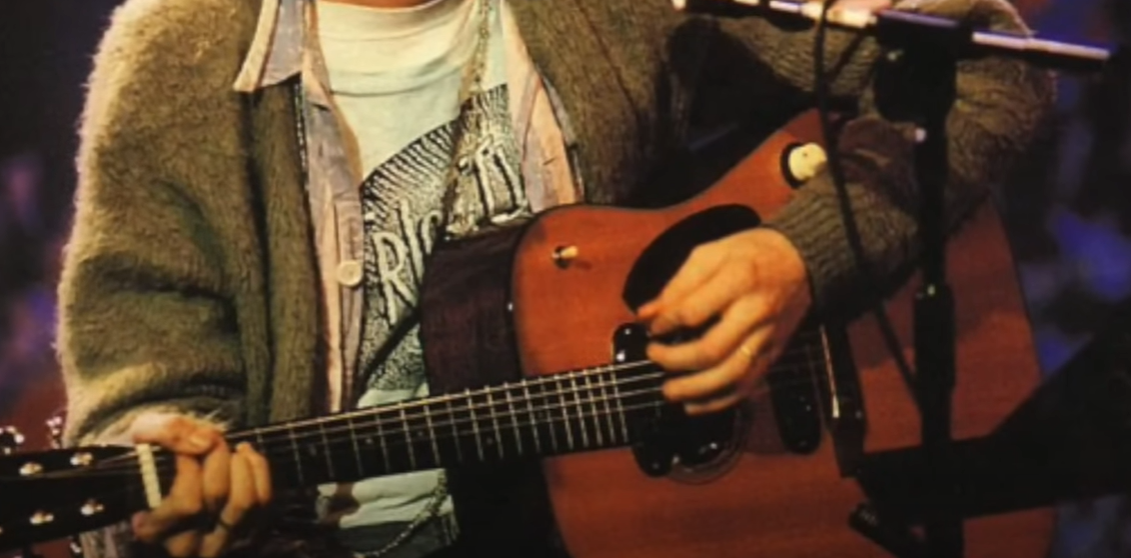
What Guitar Did Kurt Cobain Use?
Fender Mustang
Kurt Cobain famously used a Fender Mustang throughout the majority of his career. The guitar was first introduced at the 1964 World’s Fair in New York and has since become one of the most iconic guitars on the market. Cobain bought his Fender Mustang for just $75 from a pawn shop in Seattle, Washington. It was originally sunburst but Cobain later spray painted it a blue-green color.
The Fender Mustang is known for its bright, cutting sound and its short 24” scale length, which makes it particularly suitable for tuning down to lower tunings. Its unique design also features two pickups — one in the bridge and one in the neck position — which gives it an incredibly versatile range of tones. The Mustang is also known for its signature vibrato bridge, which allows Cobain to achieve a wide range of sounds and effects, from subtle warbles to aggressive flutters.
Fender Jaguar
Cobain also used a Fender Jaguar for some of his later recordings. The Jaguar is similar to the Mustang in that it has two pickups, but it features a longer 25” scale length and an even more versatile range of tones thanks to its selectable tone circuits. It’s also known for its distinctive vibrato bridge, which allows Cobain to achieve a wide range of sounds and effects.
Cobain used the Jaguar for some of his most iconic recordings, including “Smells Like Teen Spirit” and “Lithium.” It was also featured prominently in the famed MTV Unplugged performance in 1993. The guitar is now part of the permanent collection at the Rock and Roll Hall of Fame in Cleveland, Ohio.
Fender Jag-Stang
Cobain was also known to play a Fender Jag-Stang, which is an unusual hybrid of the Mustang and Jaguar. The guitar features the 24” scale length of the Mustang but with two pickups like the Jaguar. It also has a unique tremolo system that allows for greater range than either of its parent guitars.
The Jag-Stang was designed by Kurt Cobain himself and released in 1995. It has since become a popular choice among players looking for an affordable alternative to the Mustang and Jaguar. The Jag-Stang is known for its bright, cutting tone and wide range of effects, making it an ideal guitar for punk and grunge music.
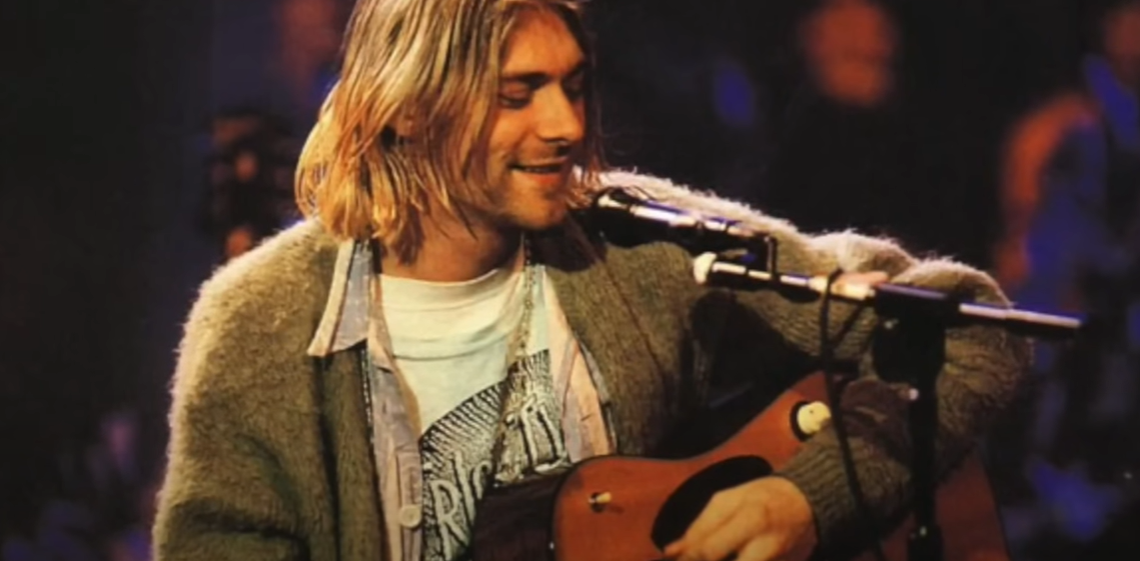
Pre-Owned Guitars
In addition to his signature guitars, Kurt Cobain was known for his fondness of pre-owned and vintage guitars. He often bought old instruments from pawn shops and second-hand stores, and he particularly favored the Fender Musicmaster model. He also owned several Gibson models, including an ES-335 and a Les Paul Junior.
These pre-owned guitars gave Cobain a unique sound and allowed him to explore new musical territories. He was able to combine the bright, cutting tone of his Fender guitars with the warm, rounded sound of his Gibson models — creating a signature grunge-rock sound that has become synonymous with Nirvana.
All in all, Kurt Cobain’s musical career is a testament to his creativity and innovation as a guitarist. From his iconic Fender Mustangs and Jaguars to his pre-owned and vintage guitars, Cobain was able to craft a truly unique sound that has resonated with generations of music fans around the world [3].
What Amps and Amp Settings did Kurt Cobain use?
Fender Amps
Kurt Cobain was known to have used a Fender Twin Reverb amp with his main guitar rig. He was also known to use two other amps during live performances: the Fender Bassman and the Fender Hot Rod Pro Junior. In addition, he often used a Roland JC-120 Jazz Chorus amp for clean sounds and effects. For distortion, Kurt would combine his Fender Twin Reverb with a SansAmp PSA-1.
Marshall Amps
Kurt Cobain was also known to use a Marshall 1959 Super Lead amp, either as part of his main rig or as an additional amp. It’s believed that he used a master volume version of this amp for live shows and studio recordings. He was also known to use a Marshall JCM 800 for some of his live shows.
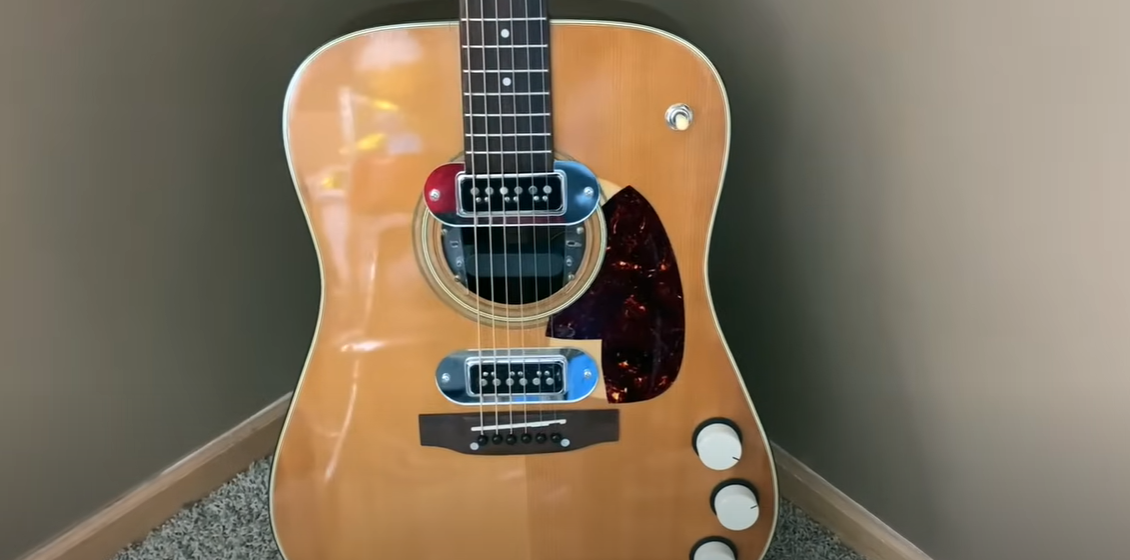
Vox AC30s
Kurt Cobain, the iconic frontman of Nirvana, was renowned for his use of the Vox AC30 amplifier as an integral component of his live setup during the band’s early days. This legendary piece of equipment not only graced the stage with its distinctive sound but also found its way into their earlier recordings, including the albums Bleach and Incesticide. Its raw and powerful tones became synonymous with the raw energy and spirit of Nirvana’s music, solidifying its place in rock history.
Amp Settings
Kurt’s amp settings are not known, however, it is possible to make some educated guesses based on what he used during live performances and studio recordings. It’s likely that Kurt preferred a high-gain sound with lots of distortion, so it’s safe to assume that he kept the gain and master volume on his amps turned up. Additionally, he was known to use delay and reverb effects, so the corresponding settings on his amps would have been quite high as well. It’s also possible that Kurt used a combination of amp settings in order to achieve different tones for different songs.
Which Pedals did Nirvana Use?
BOSS DS-1
The iconic BOSS DS-1 Distortion pedal is widely recognized as one of the most influential and widely used distortion pedals in the world. Its impact on the music industry is undeniable, and it has left an indelible mark on the sound of countless guitarists, including the legendary Kurt Cobain of Nirvana.
This versatile pedal allowed Cobain to further sculpt his tone by adjusting the three main knobs – level, tone, and drive. By fine-tuning these parameters, he could dial in the perfect balance of grit, sustain, and aggression, giving him the freedom to create the exact sound he envisioned.
The enduring popularity of the BOSS DS-1 Distortion pedal among guitarists worldwide is a testament to its exceptional quality, reliability, and ability to deliver the iconic sound that has become synonymous with rock music. It continues to inspire musicians to push the boundaries of their creativity and unleash their own sonic expressions.
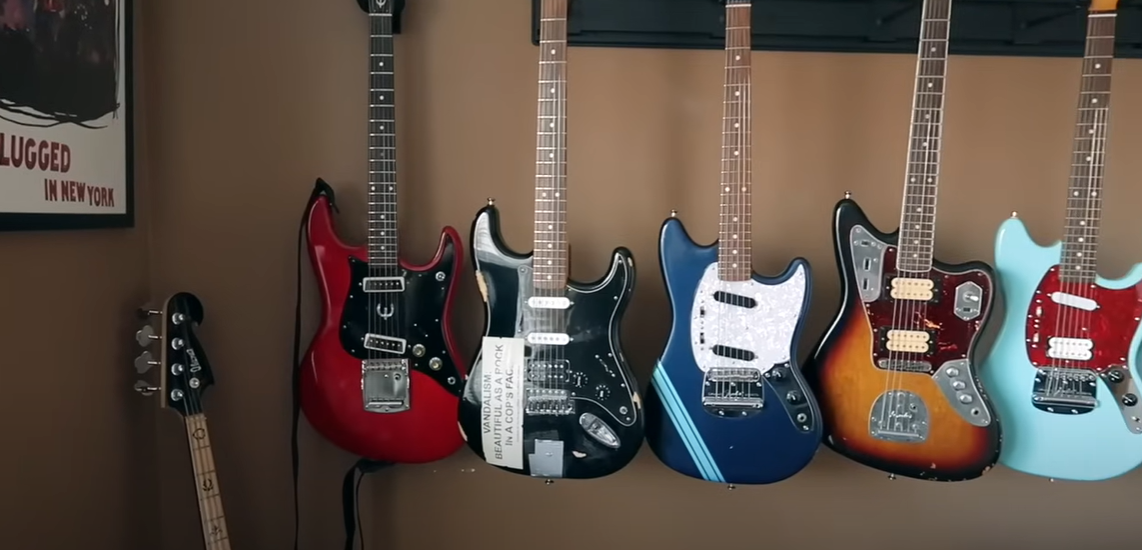
BOSS FZ-2 Hyper Fuzz
The BOSS FZ-2 Hyper Fuzz pedal is a legendary stompbox that offers a truly unique and versatile range of distortion sounds. With two distinct sections – fuzz and booster – this pedal opens up a world of sonic possibilities. The fuzz section delivers a thick and saturated tone, perfect for heavy riffs and soaring leads, while the booster section adds extra gain and sustain to push your sound even further. Whether you’re looking for a mild overdrive or a full-on fuzzed-out distortion, the FZ-2 has got you covered. It’s no wonder that Kurt Cobain, the iconic guitarist of Nirvana, relied on this pedal to shape his signature heavy and gritty sound. So plug in, unleash your creativity, and let the BOSS FZ-2 Hyper Fuzz take your guitar playing to new heights!
Pro Co RAT Distortion
The Pro Co RAT, a beloved pedal in the world of guitar effects, was frequently paired with the iconic BOSS DS-1 to create a colossal distortion sound that shook the foundations of rock music. Renowned for its ability to generate an immense amount of gain, the Pro Co RAT never compromised on clarity and articulation, allowing every note and riff to cut through the mix with precision. It was Kurt Cobain’s trusted companion, empowering him to unleash thunderous riffs and soulful solos that left a lasting impact on the music scene.
Electro Harmonix Big Muff
The Electro Harmonix Big Muff is undeniably one of the most legendary distortion pedals ever made. Renowned for its distinctive sound, it was a staple in Nirvana’s arsenal of effects. The Big Muff offers a captivating blend of sustain and fuzz, allowing musicians to create a wide spectrum of tones. From gritty bluesy overdrive to rich and creamy distortion, this pedal has the versatility to cater to a variety of musical styles. Kurt Cobain, the iconic frontman of Nirvana, frequently relied on the Big Muff to deliver blistering solos and unleash heavy riffs that defined the grunge era. Its impact on the world of rock music cannot be overstated.
Electro-Harmonix Small Clone
The Electro-Harmonix Small Clone, a beloved chorus pedal, found its home in the studio alongside Kurt Cobain. Known for its distinctive and lavish sound, it creates a captivating deep, warbling effect. This iconic pedal played a pivotal role in shaping the signature sound of Nirvana, gracing memorable tracks such as “Smells Like Teen Spirit” and “Come As You Are.” Its impact on the music world continues to reverberate, enchanting both musicians and fans alike.
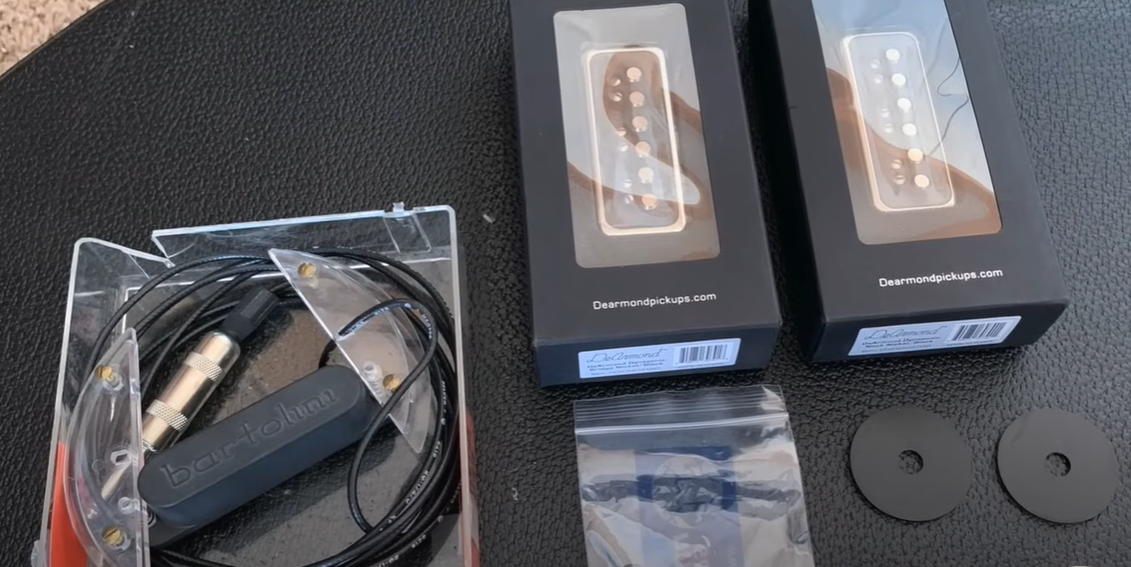
Other Effects Used by Nirvana
In addition to the classic distortion pedals mentioned above, Nirvana also employed some more esoteric effects for their unique sound. The Electro Harmonix Small Stone offers a phaser effect, while the Electro Harmonix Big Muff provides a powerful fuzz tone. The Boss DS-2 Turbo Distortion adds additional gain and an aggressive mid-range boost that works particularly well with the more abrasive side of Nirvana’s music. Kurt was also known to use a Roland RE-201 Space Echo for delays and reverbs, as well as a Digitech whammy pedal for pitch shifting. The combination of these effects resulted in an unmistakably unique sound that helped to define the grunge genre.
Nirvana’s influence on modern music can also be heard in their use of alternative tunings and chord voicings. Kurt often used alternate tunings such as open E, drop D, and even a modified version of B minor. These tunings allowed him to explore a wider range of chord voicings and harmonic possibilities. This added a unique flavor to Nirvana’s sound that was both accessible and challenging at the same time.
While grunge music is often thought of as being loud, distorted, and aggressive, Nirvana also wrote some incredibly beautiful ballads such as “Heart Shaped Box” and “Polly”. These songs featured clean guitar tones with lush, layered harmonies that showcased Kurt’s remarkable songwriting ability. While these softer tunes are often overlooked, they are an important part of Nirvana’s musical legacy.
The influence of Nirvana and Kurt Cobain can still be felt today in the music of countless bands that continue to explore the boundaries between melody and noise. From rock to punk and beyond, their music continues to inspire musicians around the world. Of course, no guitarist can ever truly capture the unique sound of Kurt Cobain, but his legacy remains an inspiration for those who seek out new ways to express themselves through music.
How to Sound Like Nirvana
Nirvana’s songs are instantly recognizable and have been inspiring fans for decades. But what is it about Nirvana’s sound that makes it so memorable? Here are a few techniques you can use to capture the essence of Nirvana in your recordings.
If you’re looking to emulate the sound of Nirvana, having the right gear is essential. Kurt Cobain favored an old, 1970s Fender Mustang for much of his guitar work. While this isn’t essential, having a vintage instrument with single-coil pickups will go a long way in getting that signature sound.
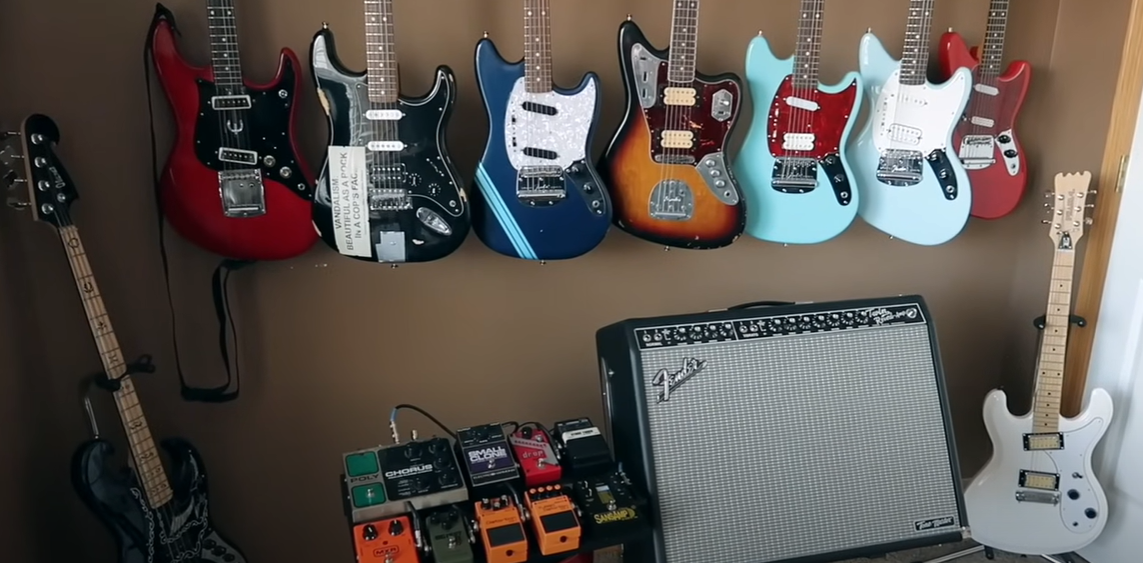
When it comes to distortion and overdrive pedals, you’ll want something that gives you plenty of crunch but without too much fuzz. Nirvana used a combination of the classic Electro-Harmonix Big Muff and Pro Co Rat pedals to create their distortion tones.
When recording, you’ll want to keep your signal chain as simple as possible. While Cobain favored vintage amplifiers like the Fender Twin Reverb for his recordings, he often chose to record with just a direct line running from the guitar to the console. This helped capture a sense of immediacy and raw energy that helped breathe life into Nirvana’s recordings.
When it comes to mixing, you’ll want to create plenty of separation between the instruments while still maintaining a sense of cohesion. Be sure to keep Cobain’s vocals in focus with plenty of reverb and echo, while keeping the distortion on the guitars and drums to a minimum. Finally, don’t be afraid to experiment with panning and automation to create interest and depth in your mix.
Nirvana’s music was often marked by abrupt changes in tempo and dynamics. To get this effect, try experimenting with time-stretching techniques for drums and vocals, as well as creative sampling. By incorporating these techniques into your mix, you can create a unique and dynamic sound that takes cues from Nirvana’s classic recordings.
From capturing the right tones to experimenting with effects, following these tips should help you capture the essence of Nirvana in your own work. With the right gear and production techniques, you can bring the spirit of Kurt Cobain and Nirvana back to life in your own recordings.
FAQ
What was Cobain’s favorite guitar?
Cobain’s favorite guitar was a 1960s sunburst Fender Mustang. He used it on many of Nirvana’s recordings, including their breakthrough album “Nevermind.” In addition to this, he also favored the left-handed Fender Jag-Stang. He reportedly purchased the instrument specifically for his use and was very fond of it.
What kind of guitar did Kurt Cobain make?
Kurt Cobain designed and built his own guitar, nicknamed the “Flaming G”. It was based on a modified Fender Jaguar body with an extra pickup in the bridge position. The guitar featured a custom paint job with a flame pattern, as well as several unusual modifications such as oversized tone and volume knobs and an angled neck joint. Although Cobain never recorded with the “Flaming G”, it was featured in the music video for Nirvana’s hit single “Smells Like Teen Spirit”.
What kind of music did Kurt Cobain play?
Kurt Cobain played mostly alternative rock and grunge but also experimented with other genres such as punk rock and metal. He was a versatile musician who wrote and performed both acoustic and electric songs. Cobain’s songwriting style often combined elements of punk, metal, folk, pop, and blues. He was also known for his powerful vocals and distinct guitar-playing style.
Do Nirvana albums still sell?
Yes, Nirvana albums still sell quite well today. Their debut album “Nevermind” is considered to be one of the most influential albums of all time and continues to sell copies more than 25 years after its release. Other Nirvana albums such as In Utero and Nevermind also remain popular among fans both old and new.
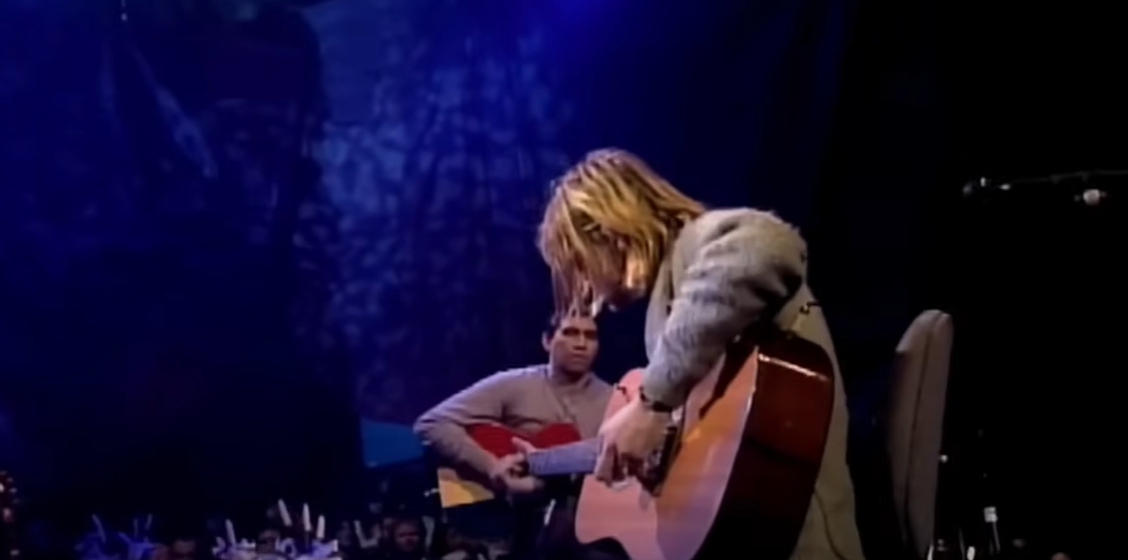
What inspired Kurt Cobain’s songwriting?
Kurt Cobain was heavily influenced by punk rock and the DIY ethic of the Seattle music scene. He was also inspired by bands such as The Beatles, Pixies, and Led Zeppelin. His songwriting often focused on themes of alienation, angst, depression, and youth culture. Cobain’s lyrics often contained clever wordplay and dark humor which resonated with a lot of people in the 1990s. He was also known for his ability to write accessible songs that were emotionally charged and yet still had catchy melodies.
What is the best Nirvana album?
The answer to this question depends on who you ask as there are many different opinions on the matter. However, Nirvana’s most popular album is widely considered to be their classic 1991 release “Nevermind”. Featuring iconic singles such as “Smells Like Teen Spirit” and “Come As You Are”, it is often seen as a benchmark for alternative rock music in the 1990s. Other popular albums by Nirvana include In Utero, Bleach, and MTV Unplugged in New York.
What happened to Kurt Cobain?
Kurt Cobain died on April 8th, 1994 at his home in Seattle, WA. The cause of death was a self-inflicted gunshot wound. He had been struggling with depression and drug addiction for some time before his death. Cobain’s legacy lives on through the music he wrote and recorded with Nirvana, which continues to inspire musicians and fans worldwide.
What kind of guitar did Kurt Cobain play on unplugged?
Kurt Cobain played a 1954 Martin D-18E on Nirvana’s MTV Unplugged performance. He had purchased the guitar from singer/songwriter Bob Dylan in 1991 and used it throughout his career with Nirvana. The instrument featured a unique design with two humbucking pickups, which allowed for a wide range of tones. It was praised by both fans and critics for the tone it produced on Unplugged.
Did Kurt Cobain use a pick?
Kurt Cobain, the legendary musician, employed a seamless fusion of finger-picking and flat-picking techniques to create his signature guitar sound. When strumming chords, he favored the use of a pick, which added a punchy and energetic quality to his playing. However, when it came to crafting intricate melodies and delicate arpeggios, Cobain opted for the intimate connection offered by his own fingers on the strings. This dynamic blend of techniques showcased not only his punk rock influences from the 1980s but also drew inspiration from the rich tapestry of traditional folk and blues styles. It was this unique amalgamation that contributed to Cobain’s distinctive musical voice, captivating audiences worldwide.
Who wrote most of the Nirvana songs?
Kurt Cobain wrote most of the songs for Nirvana. He was the primary songwriter for the band and his lyrics were often seen as a reflection of his struggles with depression, drugs, and fame. Bassist Krist Novoselic co-wrote several songs with Cobain, including classics such as “Lithium” and “All Apologies”, while drummer Dave Grohl contributed lyrics to a few of the band’s songs as well. Cobain was also known for his ability to take existing ideas and turn them into something entirely new, which is evident in the unique blend of punk rock, metal, folk, and other genres featured on Nirvana’s albums.
Useful Video: History of Kurt Cobain’s Unplugged Guitar & How I Replicated It | Nirvana Guitar History Episode 3
Conclusion Paragraph
Kurt Cobain is a great example of an artist who profoundly changed the face of music, and his legacy will live on for generations. While many factors led to his success, it was ultimately Cobain’s unyielding passion for music and creative expression that made him so beloved by fans. Kurt Cobain played different models of guitars over his career, and fans have come to recognize these iconic instruments in his work. Some of the popular are the Fender Mustang, the Fender Jaguar and the Hagstrom Viking. Along with his writing style and unique vocal delivery, Cobain’s use of these instruments helped define his sound and shape the grunge movement that changed music forever.
References:
- https://theniche-cache.com/music/2015/5/12/come-as-you-are-how-exactly-did-kurt-cobain-nirvana-get-so-famous
- https://www.rollingstone.com/music/music-lists/readers-poll-the-10-best-nirvana-songs-17463/6-all-apologies-227423/
- https://www.pmtonline.co.uk/blog/2022/09/02/kurt-cobain-gear-guide/




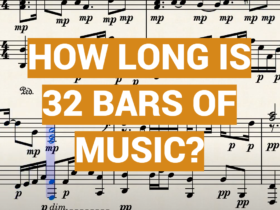





Leave a Reply